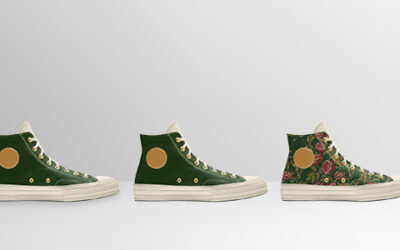
Supercharged Location Data: Competitor Locations and Conquesting
Competitive intelligence is the most under-utilized type of location data, which is truly a head-scratcher when you think about how vital the information it yields can be when making marketing and business decisions. Unless you sell big-ticket/low-purchase-frequency items like houses or cars, keeping an accurate tally of where your customers are regularly going when they’re not patronizing your business is fundamental to your continued success.
Perhaps you own a wine shop that caters to buyers at all price levels. You’ve worked hard to curate the selection of wines in your store, and you provide a level of personal service that you consider a core part of your store’s appeal. Now imagine that Mega Liquor Barn opens a few blocks away, jam-packed to the ceiling with every type of liquor imaginable. It’s difficult to find the right wine there because the staff isn’t knowledgeable, and the shelves are overstocked with choices.
But they advertise that they’ll beat your prices, and you rightly fear that your best customers may be lured away to save a few bucks. Aside from nervously watching your daily sales totals, you have no other way to understand the impact Mega Liquor Barn is having on your business. And you certainly have no way of turning a customer around as they get frustrated searching for a parking space in the crowded lot at The Barn.
But with competitive location data, you could solve both issues simultaneously. First, you’d have an accurate tally of how often your customers (or even a subset comprised of your most valuable customers) visited your competitors. You could spot trends as they emerge (repeat visits instead of a single “curiosity” visit) and employ that data to tune future marketing.
Second, you could flex your conquest muscles by leveraging automation to deliver the perfectly timed push notification inviting them to drop by for a personalized shopping session with you and casually include that you’ve been holding back a special reserve bottle of their favorite wine. These are just two examples of the power you have when you track competitive visits and use that data to do effective conquesting.
On average, 17% of recipients immediately react to compelling “turnaround” messages that steer them away from competitors and back to the sender’s business.
You may also be interested in
How the Right AI Can Expand the Casino Player Experience
Most casinos aren’t fully embracing AI, and, in turn, they’re missing opportunities to take care of their existing players and outpace their competition. Unrealized potential awaits—from enjoying the benefits of a true attribution channel to delighting players with...
How to Use AI Behavioral Data to Inform All Your Marketing Initiatives
Everyone has had a validating experience with a product where it feels like a brand just gets them. To the customer, it feels like a match made in heaven. They may love the features of a certain product, but when asked what they like most about it, it’s not convenient...
Leveraging Artificial Intelligence (AI) to Uncover Sales Opportunities
Businesses are constantly on the lookout for innovative ways to maximize their revenue. Two of the most powerful sales techniques are cross-selling and upselling. Both strategies involve offering additional products or services to a customer during the sales process,...
The Competitive Advantages of Shifting from Personalization to Hyper-Personalization
Personalization has been a trending concept for several years. In fact, 7 out of 10 customers now expect some degree of personalization from the brands they choose according to a McKinsey & Co. study. Crafting a personalized experience based on the preferences and...





